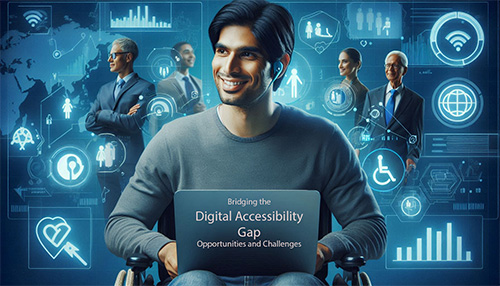Digital technology holds immense potential for assisting individuals with disabilities. However, the journey towards achieving universal accessibility is far from straightforward. This article explores the complexities of digital accessibility, emphasizing the need for a concerted effort to realize its full potential.
Introduction
The notion of accessibility in digital technology extends beyond mere technical challenges. It encompasses a multifaceted interplay of factors, including technological advancements, legal frameworks, economic considerations, and societal values. Understanding accessibility as a dynamic process rather than a static state is crucial for driving meaningful improvements.
Navigating the Digital Landscape
Digital accessibility operates within a complex ecosystem comprising various structures and processes. From hardware design to content production, each element must align with accessibility principles. Furthermore, legal and regulatory frameworks shape the accessibility landscape, influencing industry practices and societal norms.
A Path Forward
To foster sustainable progress in digital accessibility, a holistic approach is imperative. This involves integrating accessibility considerations into every stage of technology development, from research to deployment. Embracing open standards and incentivizing accessibility within the market can drive positive change while ensuring inclusivity for all users.
Regulatory Imperatives
Effective regulation plays a pivotal role in promoting digital accessibility. However, regulations must evolve in tandem with technological advancements to remain relevant and impactful. Emphasizing open standards and consumer rights can empower users and foster a culture of accessibility across industries.
Industry Perspectives
Accessibility should not be viewed as an optional feature but as a fundamental requirement embedded within the fabric of digital innovation. From startups to market giants, all entities must prioritize accessibility in their products and services. By embracing inclusivity, businesses can unlock new opportunities and drive positive societal change.
Conclusion
As digital technologies continue to reshape our world, the imperative of accessibility grows ever more pronounced. By embracing a comprehensive approach that combines legal frameworks, industry initiatives, and societal values, we can bridge the digital accessibility gap and create a more inclusive future for all. Let us envision a world where assistive technology is not an afterthought but an integral component of our digital infrastructure.
References
Kim, H. K., & Park, J. (2020). Examination of the protection offered by current accessibility acts and guidelines to people with disabilities in using information technology devices. Electronics, 9(5), 742.
Shapiro, Z. E., Golden, A. R., Antill, G. E., Fang, K., Deb, C., Clarke, E., … & Fins, J. J. (2022). Designing an Americans with abilities act: Consciousness, capabilities, and civil rights. BCL Rev., 63, 1729.

